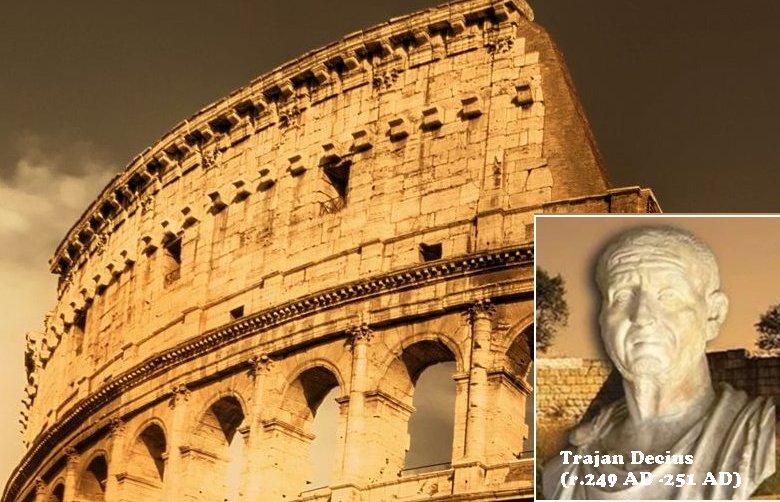Battle Of Abrittus: Roman Emperor Decius And His Troops Ambushed And Defeated By Invading Goths
A. Sutherland - AncientPages.com - The Battle of Abrittus was one of the greatest battles of the Late Antiquity.
Roman three legions were defeated, and Roman Emperor Trajan Decius (r. 249-251 AD) and his son Herennius Etruscus were killed in battle while trying to stop the barbarian invasion of the Goths.
In 2016, archaeologists identified the precise site of the Battle of Abrittus in 251 AD, in the vicinity of today's city Razgrad, in Northeastern Bulgaria. At the time, Abrittus was a significant city and fortress in the Roman province of Moesia Inferior.
In 250 AD, an army of about 70,000 Goths led by chieftain Cniva, one of the Goth's most outstanding leaders, invaded the Roman Empire by crossing the Danube at Novae, one of the few great Roman legionaries along the Danube River.
At first, the Goths were halted by Emperor Trajan Decius at Nicopolis ("City of Victory"). At that time, the capital city of one of many Roman provinces, with a long history going back to 29 BC when Caesar Augustus founded it in commemoration of his victory in 31 BC over Mark Antony and Cleopatra at the Battle of Actium nearby.
Later, however, the Goths returned, attacked, and conquered several Roman cities reaching as far south as Philipopolis (today's Bulgaria's Plovdiv), a very ancient town with reach history of conquests by Thracians, Macedonians, Romans, Byzantines, Bulgarians, and Ottoman Turks.
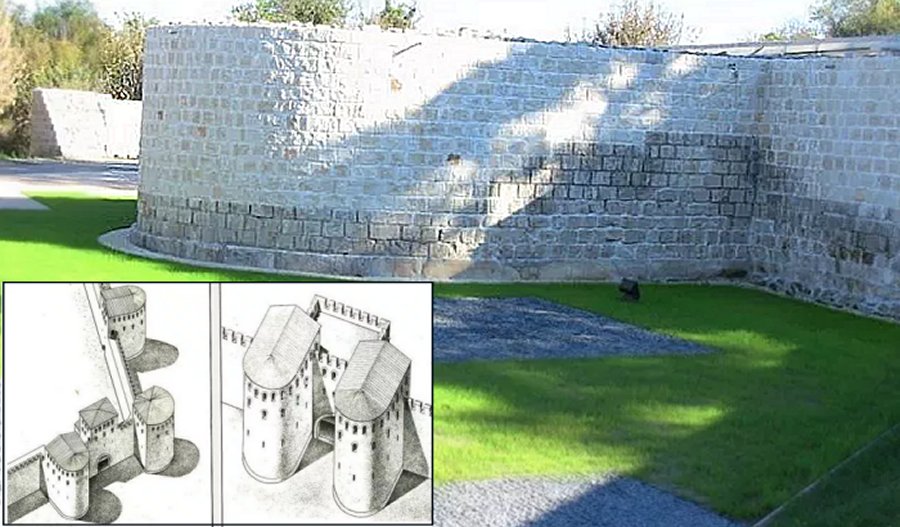 At the beginning of the 4th century AD, during the reign of Roman Emperor Constantine I the Great (r. 306-337 AD), the Romans built a large fortress in Abrittus. The city of Abritus had a fortified area of about 37 acres), four gates, and 35 fortress towers. Images: Abritus Archaeological Preserve
At the beginning of the 4th century AD, during the reign of Roman Emperor Constantine I the Great (r. 306-337 AD), the Romans built a large fortress in Abrittus. The city of Abritus had a fortified area of about 37 acres), four gates, and 35 fortress towers. Images: Abritus Archaeological Preserve
The Goths' ten-year-long raiding finally culminated in the Battle of Abrittus in 251 AD when they met the forces of Emperor Trajan Decius and his son (co-emperor) Herennius Etruscus (c. 227 – June 251. The Roman army was defeated, and Emperor and his son were killed.
Decius wasn't very popular, and despite his several building projects in Rome, he chiefly remained a persecutor of Christians. The latter regarded Decius' death as divine judgment.
The resting place of Decius may be located somewhere in the vicinity of the ancient Abrittus battlefield. The Roman considered flat terrains as an advantage for their legions. Therefore, Decius, his son, and their troops established there their camp.
 Roman and Goth weaponry discovered during archaeological research on the site of the 251 AD Battle of Abritus. Image credit: BNT
Roman and Goth weaponry discovered during archaeological research on the site of the 251 AD Battle of Abritus. Image credit: BNT
At first, Decius' troops surprised the Goths in the frontline, but Gothic chieftain Cniva was a clever strategist and let them take the initiative. Then, he divided his forces into smaller and more mobile units, trying to draw the Romans to the marshlands.
The Romans made the disastrous mistake of pursuing the fleeing Goths directly into the marshes. They were ambushed and routed. Decius, his son, and most of his troops had no way out. Thus, Cniva successfully managed to lure the Romans to the nearby wetland.
"He [Decius] and his son and a large number of Romans fell into the marshland; all of them perished there, none of their bodies to be found, as they were covered by the mud…" wrote Johannes (or John Zonaras), a Byzantine chronicler and theologian who lived in Constantinople.
Emperor Decius died with almost the entire army. It was the first time that not only one but two Roman two emperors perished during a battle with a foreign invader.
Abrittus first emerged as an ancient Thracian settlement established no later than the 5th century BC. It flourished as a Roman and later Byzantine city in the Late Antiquity. The ruins of Abrittus are almost probably located near the town of Razgrad in Northeast Bulgaria.
At the beginning of the 4th century AD, during the reign of Roman Emperor Constantine I the Great (r. 306-337 AD), the Romans built a large fortress in Abrittus. The city of Abritus had a fortified area of about 37 acres), four gates, and 35 fortress towers.
Regardless of the city's strong defenses, however, the Late Antiquity Roman city of Abrittus was conquered and plundered many times by barbarian tribes, including the Goths in 251 AD, and in 376-378 AD, the Huns of Attila in 447 AD, and the Avars and Slavs in 586 AD.
At the end of the 6th century AD, the city of Abrittus declined, and its residents left. So did many other Roman towns and strongholds along the Lower Danube frontier of the Empire, the region which today belongs to Bulgaria.
Today, much of the area of Abrittus remains unexplored but archaeological excavations revealed a large number of artifacts and coins among the ruins.
Apart from the coins, the artifacts found at the site include many Roman Era arms such as parts of swords, shields, spears, armors, graves, and even poles from military tents.
However, one of the most valuable archaeological finds from Abritus is the gold treasure dated to the Late Antiquity that contains 835 coins from the 5th century AD weighing 4 kilograms and dating to the reigns of ten Eastern Roman Emperors and one Western Roman Emperor.
Written by – A. Sutherland - AncientPages.com Senior Staff Writer
Copyright © AncientPages.com All rights reserved. This material may not be published, broadcast, rewritten or redistributed in whole or part without the express written permission of AncientPages.com
Expand for referencesMore From Ancient Pages
-
 Jigai – Suicide Ritual For Wives Of Samurai – Feminine Counterpart Of Seppuku
Ancient History Facts | Feb 24, 2018
Jigai – Suicide Ritual For Wives Of Samurai – Feminine Counterpart Of Seppuku
Ancient History Facts | Feb 24, 2018 -
 Ancient Desert Mystery – Did Thousands Vanish Without A Trace Because Of An Ominous Prophecy And Revenge?
Featured Stories | Nov 28, 2022
Ancient Desert Mystery – Did Thousands Vanish Without A Trace Because Of An Ominous Prophecy And Revenge?
Featured Stories | Nov 28, 2022 -
 2,000 Year-Old Books Written By Bian Que The Divine Healer Unearthed
Artifacts | May 13, 2014
2,000 Year-Old Books Written By Bian Que The Divine Healer Unearthed
Artifacts | May 13, 2014 -
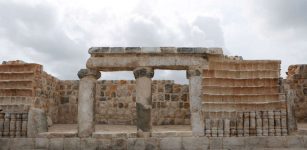 Ancient Mayan City Filled With Palaces, Pyramids And Plazas Discovered On Construction Site In Mexico
Archaeology | May 27, 2022
Ancient Mayan City Filled With Palaces, Pyramids And Plazas Discovered On Construction Site In Mexico
Archaeology | May 27, 2022 -
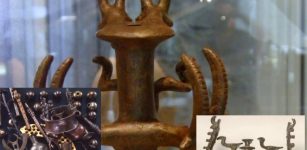 Nahal Mishmar Secrets: Priceless Artifacts In Cliff Cave Overlooking The Dead Sea
Artifacts | May 20, 2014
Nahal Mishmar Secrets: Priceless Artifacts In Cliff Cave Overlooking The Dead Sea
Artifacts | May 20, 2014 -
 Forgotten And Overgrown Step Pyramid Of Koh Ker – Ancient Memory Of The Khmer Empire
Featured Stories | Apr 19, 2017
Forgotten And Overgrown Step Pyramid Of Koh Ker – Ancient Memory Of The Khmer Empire
Featured Stories | Apr 19, 2017 -
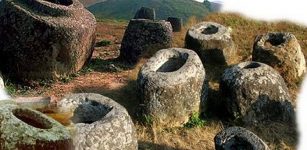 Mysterious Gigantic Jars Of Unknown Origin Discovered Worldwide
Artifacts | Dec 27, 2018
Mysterious Gigantic Jars Of Unknown Origin Discovered Worldwide
Artifacts | Dec 27, 2018 -
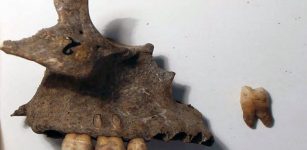 350-Year-Old Remains Unearthed In A Stone Age Site In Portugal
Archaeology | Feb 22, 2022
350-Year-Old Remains Unearthed In A Stone Age Site In Portugal
Archaeology | Feb 22, 2022 -
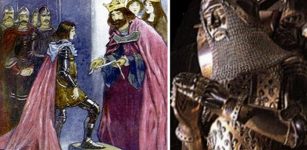 Why Is The Black Prince Still A Controversial Historical Figure?
Ancient History Facts | Aug 15, 2019
Why Is The Black Prince Still A Controversial Historical Figure?
Ancient History Facts | Aug 15, 2019 -
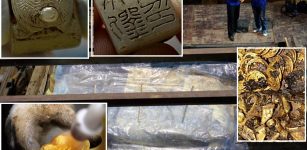 Mystery Of Marquis of Haihun: 2,000-Year-Old Royal Coffin Opened In China
Archaeology | Apr 20, 2016
Mystery Of Marquis of Haihun: 2,000-Year-Old Royal Coffin Opened In China
Archaeology | Apr 20, 2016 -
 Angkor Wat: Pre-Industrial City’s Downfall And Climate Change
Archaeology | Apr 18, 2020
Angkor Wat: Pre-Industrial City’s Downfall And Climate Change
Archaeology | Apr 18, 2020 -
 Lost Knowledge Of Energy And Crystal Technology In Ancient Egypt
Ancient Technology | May 17, 2019
Lost Knowledge Of Energy And Crystal Technology In Ancient Egypt
Ancient Technology | May 17, 2019 -
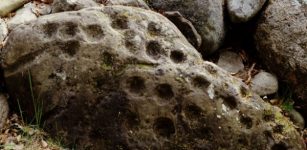 Largest Collection Of Ancient “Cup-Marked” Rocks Ever Found In Scotland
Civilizations | Nov 23, 2018
Largest Collection Of Ancient “Cup-Marked” Rocks Ever Found In Scotland
Civilizations | Nov 23, 2018 -
 Long History Records Of Medicine In Mesopotamia And Sumer
Civilizations | Nov 20, 2017
Long History Records Of Medicine In Mesopotamia And Sumer
Civilizations | Nov 20, 2017 -
 Aethelflaed – ‘Iron Lady Of Mercia’ Was A Brave Female Warrior Who Led Forces Against Danish Vikings
Featured Stories | Aug 2, 2019
Aethelflaed – ‘Iron Lady Of Mercia’ Was A Brave Female Warrior Who Led Forces Against Danish Vikings
Featured Stories | Aug 2, 2019 -
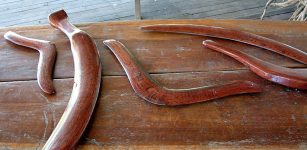 Boomerangs Were Used To Shape Stone Tools By Aboriginal People
Archaeology | Aug 16, 2022
Boomerangs Were Used To Shape Stone Tools By Aboriginal People
Archaeology | Aug 16, 2022 -
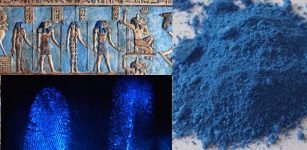 Ancient Egyptian Blue Powder Makes Fingerprints Glow And Will Be Used By Crime Scene Investigators
Ancient Technology | Jun 15, 2017
Ancient Egyptian Blue Powder Makes Fingerprints Glow And Will Be Used By Crime Scene Investigators
Ancient Technology | Jun 15, 2017 -
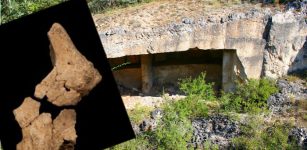 Major Breakthrough: 1.4-Million-Year-Old Bones Discovered In Spain Rewrite History Of Human Evolution In Europe
Archaeology | Sep 29, 2022
Major Breakthrough: 1.4-Million-Year-Old Bones Discovered In Spain Rewrite History Of Human Evolution In Europe
Archaeology | Sep 29, 2022 -
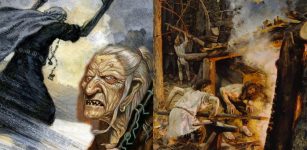 Louhi – Witch Goddess Of The North And The Magical Artifact Sampo In Finnish Mythology
Featured Stories | Sep 21, 2017
Louhi – Witch Goddess Of The North And The Magical Artifact Sampo In Finnish Mythology
Featured Stories | Sep 21, 2017 -
 Eugenio De Torralba – Renaissance Magician’s Dangerous Spirit Communications
Featured Stories | May 6, 2019
Eugenio De Torralba – Renaissance Magician’s Dangerous Spirit Communications
Featured Stories | May 6, 2019

